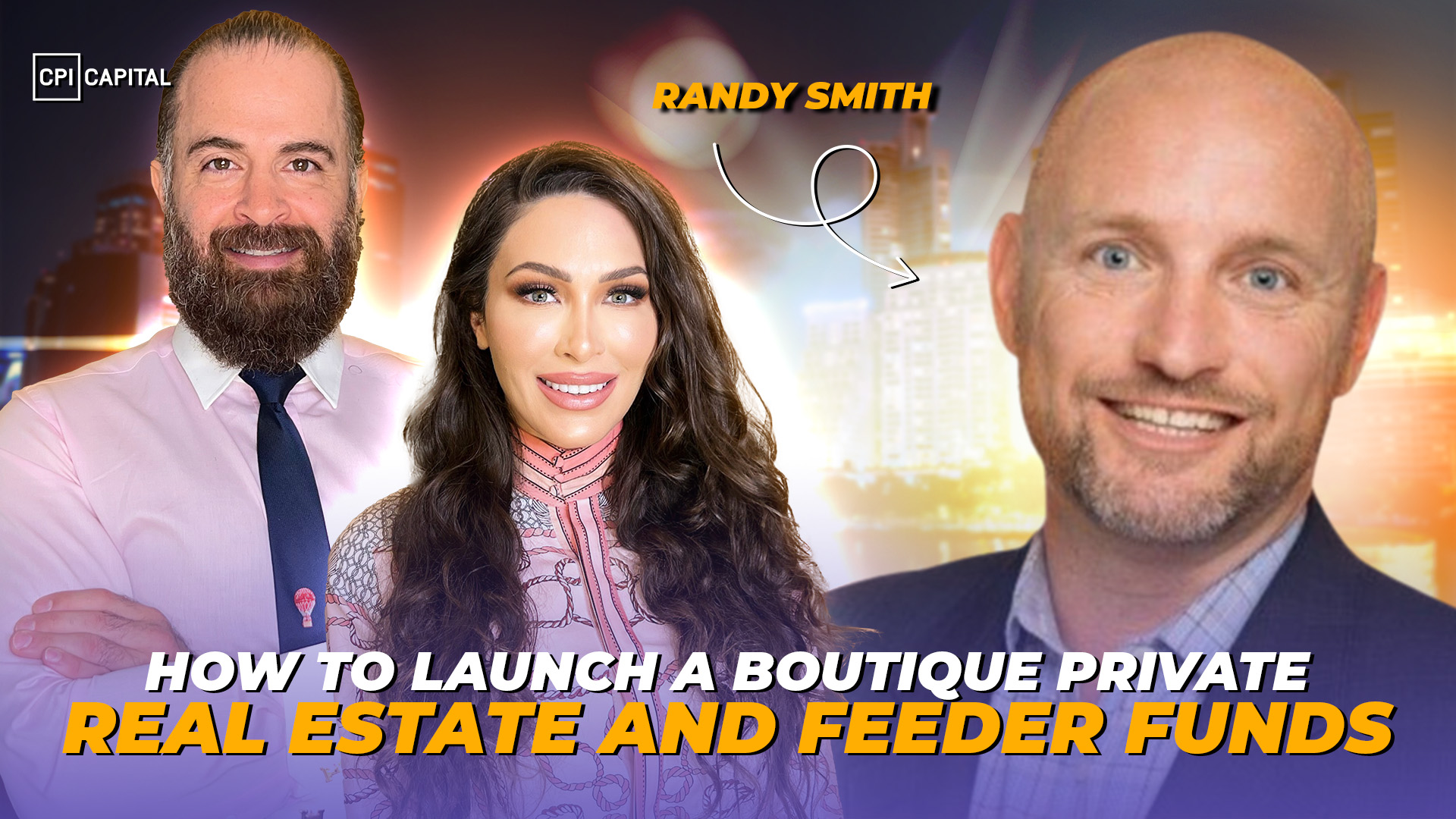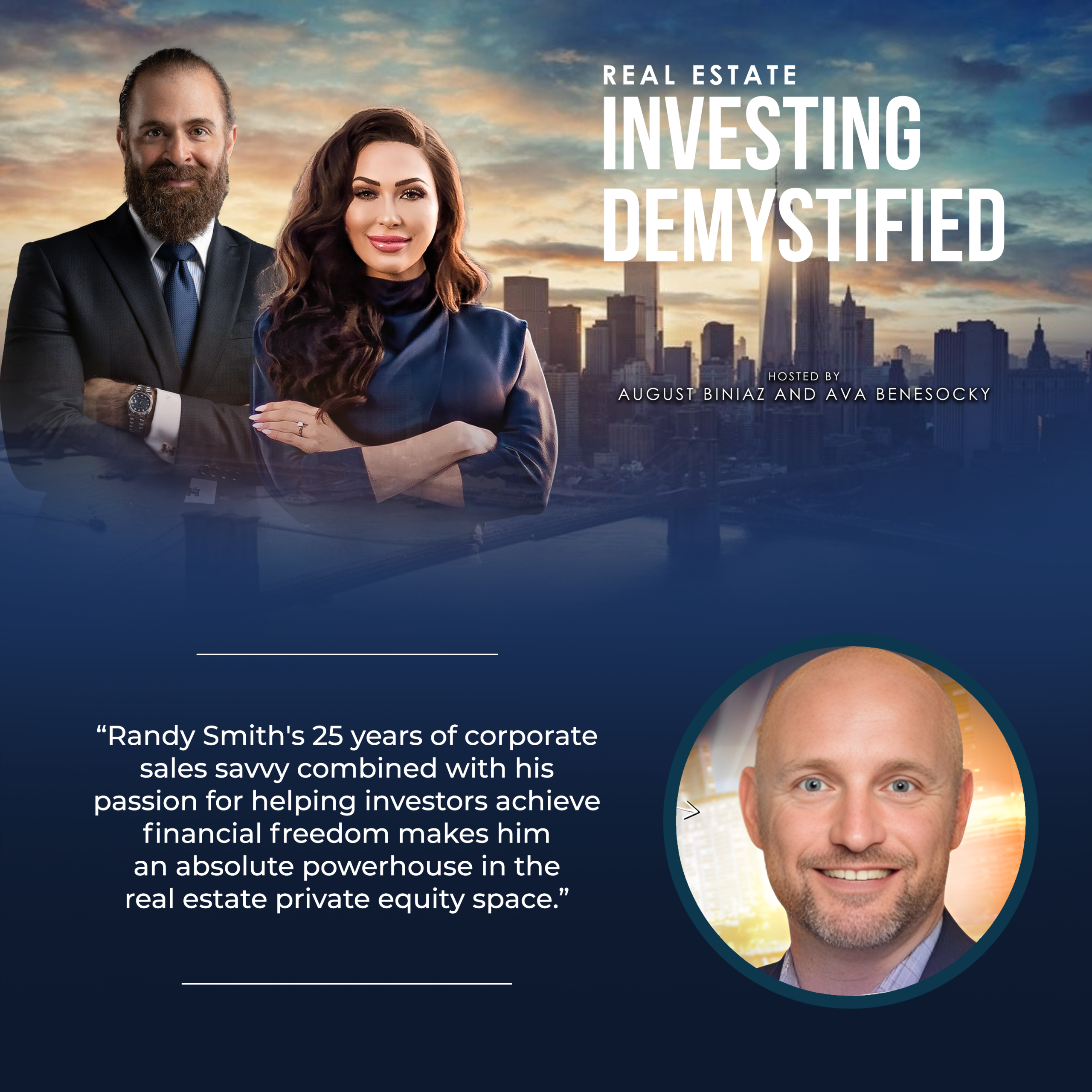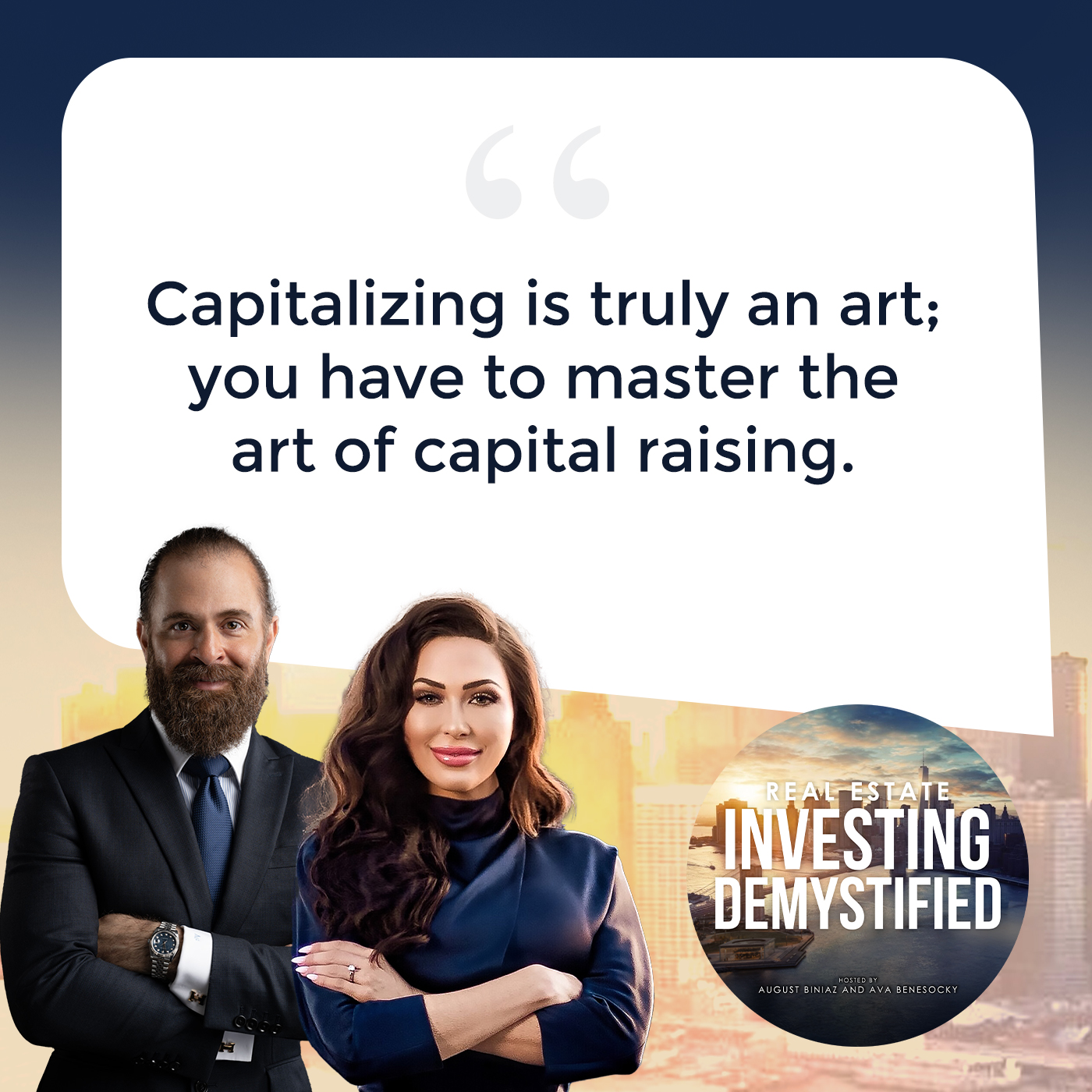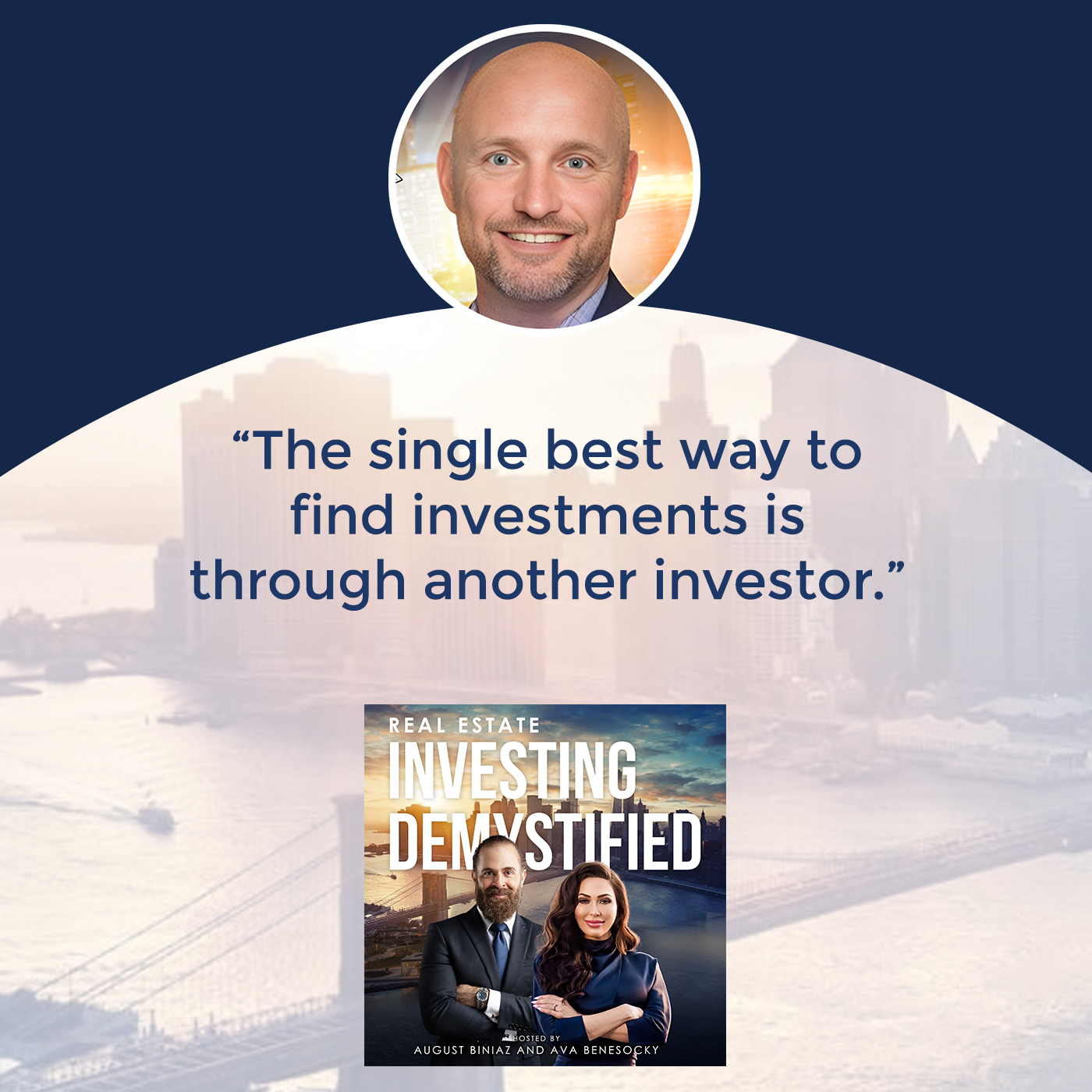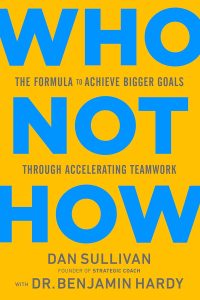Ever wondered how to break into the world of boutique private equity with a focus on real estate and feeder funds? This episode features Randy Smith, the driving force behind Impact Equity and Raise Capital Coaching and Consulting, as he pulls back the curtain on building your own specialized PE firm. With 25 years of corporate sales experience, Randy transitioned into passive real estate investing and now empowers others to navigate this space. He shares his detailed “Raise Strategy,” walking listeners through the process of attracting investors, conducting due diligence, and structuring complex funds. Randy delves into the specifics of setting up feeder funds, giving real-world insights on creating diversified investment opportunities. Whether you’re looking to start your own firm or simply understand the inner workings of real estate private equity, Randy’s transparent and practical advice, rooted in his own journey, makes this a must-listen. Expect a candid discussion, peppered with Randy’s signature down-to-earth approach, on what it truly takes to launch and run a successful boutique private equity operation.
Get in touch with Randy Smith:
- LinkedIn: https://www.linkedin.com/in/randallmsmith
- Website: https://www.impactequity.net
If you are interested in learning more about passively investing in multifamily and build-to-rent properties, click here to schedule a call with the CPI Capital Team or contact us at info@cpicapital.ca. If you like to co-syndicate and close on larger deals as a general partner, click here. You can read more about CPI Capital at https://www.cpicapital.ca.
#avabenesocky #augustbiniaz #cpicapital
—
Watch the episode here
Listen to the podcast here
Important Links
- Randy Smith on LinkedIn
- Impact Equity
- RAI$E Capital Coaching & Consulting
- The Gentle Art of Crushing It! Podcast
- CPI Capital
- Gobundance
- Who Not How
About Randy Smith
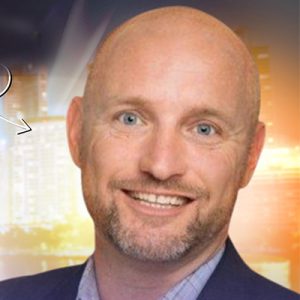
As a Limited Partner in 25 investments spanning 12 operators and 8 asset classes, he brings deep expertise in due diligence and transparency. In 2024, he founded R.A.I.S.E. Capital Coaching & Consulting to support new capital raisers and professionalize real estate fundraising. Randy also co-hosts The Gentle Art of Crushing It podcast and resides in Pe-or-ia, Arizona, with his wife, Jenny.
How To Launch A Boutique Private Equity Firm Specializing In Real Estate And Feeder Funds – Randy Smith
Welcome back to Real Estate Investing Demystified. This is our second show of the day.
Don’t give any of our trade secrets. These things take months to prepare. The show was a production. It takes a whole day to put it together. Don’t say we’re doing two shows in a day.
Sometimes people would reach out, and they’re like, “You guys missed a week or something.” I’m like, “Life is busy. We have two babies now. August is a big skier going up the Black Diamonds. I’m trying not to get to kill himself now that he’s a father of two.
I’m skiing better for survival purposes, so notice that. Let’s bring attention to today’s show. We’re excited. I recently attended Harvard for the Private Equity Venture Capital Program. I’ll talk about why it relates to our guest. It was a program they offered. I got accepted. I attended Boston and it was incredible. Sixty-five other people were there from all around the world. Only 8 people from the 65 were from the US. I live part-time in the US. I was one of those eight people, but the majority of people were from all over the world.
It was super exciting. I learned a lot, but having learned a lot about private equity and venture capital and about how deals are structured, I learned about so many different ways that a deal could be put together. When you talk about Private Equity Venture Capital, you’re mainly talking about buying companies, not real estate. Even though a lot of private equity firms have a location in real estate, Blackstone has more allocation to real estate than they do when it comes to leveraged buyouts or mergers and acquisitions.
It’s about how these deals are structured and the entities that get created. For example, I’ll learn about this thing called secondaries. Secondaries is when there’s a main fund, so Blackstone puts together a fund. It’s usually a ten-year lifespan the fund has, but then secondaries are when somebody else puts together another fund that allows investors to have access to the main fund that they wouldn’t otherwise because only particular institutions have access to that main fund. The secondary allows for that.
Our guest today is a good friend of the show and of our company. He’s going to talk to us about the mechanics of some of these fund-of-funds, feeder funds. We’re going to talk about co-GPs. How do you go about finding these fund-of-fund managers? In my personal opinion, fund-of-funds might be a better way than working directly with a sponsor or a general partner, because the fund-of-funds manager is out there looking for the best general partner to invest with.
As long as the investors are not being diluted, that’s the best way to go about it. That fund-of-fund manager is looking for the best sponsor, looking for the best real estate investor, cherry picking the best sponsor, cherry picking the best deals, and looking for the best economics for their investors. I didn’t have to do the talking. Let’s get into the show and bring our guests on. Maybe you can give a quick background about who our guest is.
I would love to. We’re joined by Randy Smith. He’s the founder of Impact Equity, leveraging 25 years in corporate sales and leadership to help investors achieve financial freedom through passive real estate investments. Since launching Impact Equity in 2022, he has assisted 115-plus investors in placing $9 million across 17 projects, with 6 top-tier operators. As a limited partner himself in 25 investments, batting 12 operators and 8 asset classes, he brings deep expertise, due diligence, and transparency. In 2024, he founded RAI$E Capital Coaching & Consulting to support new capital raisers and professionalize real estate fundraising. Randy also co-hosts The Gentle Art of Crushing It! Podcast, and resides in Peoria, Arizona, with his wife, Jenny. Welcome to the show. Randy. Thanks for being here.
Thank you so much for having me on the show. I’m excited to be here with you.
Randy Smith’s Transformation: Leaving Corporate America For Real Estate Dreams
Let’s jump into things. You had a successful career in Corporate America. First of all, what did you do in Corporate America? Give us your background there, then what made you leave Corporate America to start your career in real estate?
Thank you. I was a sales guy for 25 years in Corporate America. I started out in a small computer company in Los Angeles, dialing for dollars, then moved over to a larger Fortune 100, Fortune 200 organization for the next twenty years, where I led sales teams. I set up phone sales centers and spent the last ten years of my career carrying the bag again and managing territories with Fortune 100 and Fortune 200 organizations. Twenty-five years of sales experience, primarily dealing with solving complex technology and service-related issues for clients.
Having that sales background ties into what you’re doing today. I wanted to jump right into capital raising and start discussing capital raising in the show. I’d like to get your perspective on capital raising. I have my own thesis at CPI Capital. I’m more focused on the equity side of the business. With capital raising, for myself, I’ve intimately spoken to thousands of investors. I have close relationships with hundreds of investors, but I feel that capitalizing is truly an art. You have to master the art of capital raising, and there are so many ways to go about it.
There’s the hard sale and the soft approach. There’s the “fear of missing out” approach. It’s very important in relationship-building. You can be pushy, you can stand back a little bit more, and have investors come to you. I want to get your perspective because there are tons of books and resources out there where people can try their best to master the art of capital raising, but you launched the RAI$E Capital Coaching & Consulting program. Talk to us about your perspective on how you connect and approach investors, how you create relationships with them, then how you teach others to raise capital. Maybe you can walk us through the process.
The Art of Capital Raising: Building Trust & Genuine Connections With Investors
It’s an interesting question. I think that the very best salespeople in the world are not really salespeople at all. They’re just folks who are having engaging conversations, where they’re truly trying to bring value and help the people that they’re working with. As a sales professional, having true, authentic relationships with your investors or potential investors is the best way to build trust and confidence from them. Eventually, people will invest with people they know, like, and trust. The way you build that know, like, and trust is by spending time with them in different venues, different touch points, and gradually over time, building trust with them.
There are a lot of pushy, almost manipulative salesy techniques that can be used in the space. I personally choose not to go down that path because more often than not, I’m dealing generally with the less sophisticated investor, folks that are either newly accredited or about to be accredited investors. I think it takes that teacher’s mentality to educate and inspire them to get involved in this space, versus trying to convince, coerce, or push somebody to invest in this space.
Unfortunately or fortunately, I guess a lot of folks have invested in this space over the last few years that possibly should not have been invested in the first place. It’s better in the long run for investors, operators, and us to choose the right people to participate in these. It’s important to make sure that we’re putting the right people in these types of investments, personally.
I’m with you there. I think there are two main things. You have to take a genuine approach and then have a great investment opportunity. Let them ask questions, and don’t use big words to try to sound like you know it all. I agree with you there.
We had an associate of ours in one of our deals a couple of years ago. He spoke tremendously and incredibly when it comes to private equity language. I looked up to him a lot because of the words he was using. When we had a presentation for our investors, the number of complaints that Ava got was mind-blowing. To me, he was incredible with the words he was using and the private equity language he was using, but the investors hated it. They’re like, “We don’t understand half of the things this guy is saying,” so that’s a great point you guys are making.
A big piece of what we do is taking what can be a fairly complex idea and breaking it down into very simple and understandable terms, and relating it to other things that maybe they already have some type of understanding of. It’s much like what you said. If you start talking at a much higher level than where there’s sophistication is, mostly it’s going to go right into their head, and you’re not doing them any service by talking down to them or talking at the level that they’re not going to understand.

Private Equity Firm: A really big piece of what we do is taking a fairly complex idea and breaking it down in the simplest, understandable terms.
Investors can read the person on the other side of the screen. They can tell if you’re genuine or if you’re just trying to sell them on something. I love your mindset on that. Talk to us about how you teach others to raise capital. When they come on your platform, do you help them with how to connect with investors, how to interact with the investors, and how to nurture the investors on an ongoing basis? Talk to us about that.
How to get leads, possibly?
Yeah, how to connect.
The RAI$E strategy is an acronym for the five-step process that I teach people to go through, usually, for their first or early raises that they’re doing. The R in the acronym stands for relaying your story to your avatar. We spend a lot of time digging into their personal journey, their origin story, and helping them relay that information in a way that’s going to help capture the interest in the emotion of the person that they’re talking to. Going back to that initial thought, where people can connect with people they know, like, and trust. People will know, like, and trust people who are very similar to them. If we can help them relay that story and touch on points that are going to grab that emotion, that will likely lead to a better result for everybody.
People connect with those they know, like, and trust. Similarly, they will know, like, and trust those they perceive as similar to themselves. Share on XThe avatar piece is very simple. I generally will teach folks to focus on somebody who’s a previous version of who they are. I, as an example, was a high-income sales guy, so I focus on talking to and working with potential investors who are high-income sales professionals, either technology professionals or financial services professionals, because we speak the same language. We connect. I know the problems they have. I know the challenges they have. I know the fears they have about getting laid off or all of those different types of things. That’s the R.
The A is the attract portion. Specifically, I focus on LinkedIn because that’s where I have had most of my success. When I first launched Impact Equity, we simply messaged everybody with whom I was already connected, who were old colleagues and clients of mine. I was able to raise a significant amount of capital in a very short period of time. I’ve taken the skills that I have used in sales for fifteen years to LinkedIn. I try to streamline that down to 2 or 3 different slides about best practices, about leveraging LinkedIn to attract investors.
I is the identify portion, which is simply due diligence. How do we find good operators? How do we find good partners? I’ve got a hundred-plus point due diligence process that I take people through to show them how I find the best operators. In today’s marketplace, unfortunately, most operators aren’t going to get through the first ten questions that we go through. It’s a good way to filter through those operators that I don’t think less sophisticated investors should be investing with.
The S is how you structure. We talked a lot about fund of funds, syndication, co-GP, JV, and helping people understand what’s going to work best for them. Folks who are getting started in this space, quite often, if they’re operators, they don’t need to jump into syndication right away. Quite often, a simple promissory note can make a lot of sense. They don’t have to jump in and spend all the money on the others. Finally, I take them through the engagement or the nurturing process, where we talk about CRM. We talk about portals and email marketing.
It’s a full-stop step process.
Yeah, full-stop shop. It’s amazing. I was going to say that’s great because we built everything from the ground up here at CPI Capital. It’s nice that you provide that service for people to come to you and learn everything that needs to happen.
I like to take a step back. I feel maybe we jumped into the conversation quickly. I’m taking a step back. You’re in corporate sales. You get involved in real estate at some point. This is your focus. You’re a fund manager now. Talk to us about your transition. You also wrote your bio that you invested as an LP. Maybe you can start with how you get snagged in? Did somebody try to pitch you, or did you go looking for it? Talk to us about that stuff there?
Passive Investing Journey & Layoff Pivot
My journey was much like a lot of folks. When I started to accumulate some wealth as a sales guy, I decided I was maxing out my 401(k) and needed to find a place to put the additional capital that I was earning. I started buying single-family homes like so many do. I tried Turnkey. I didn’t scale for that. I tried to BRRRR strategy and bought a bunch of houses in Atlanta, and found out pretty quickly that I wasn’t going to be able to scale that while I was on my W2 to the level that I would need to replace a strong six-figure income.
I started looking at multifamily and thought about jumping in and buying apartments from day one. Quite honestly, it scared me. These were much bigger checks than I was writing for these small single families. I decided to passively invest to take a peek behind the curtains and see if the syndication was something that I wanted to do in the long run, and I moved my career in that direction.
Briefly describe what syndication is.
Syndication is a pooling of investor funds to help purchase an asset. You get an operator. Generally, what will happen is that an operator is doing their own deals. At some point, they run out of money, so they need to start raising money from other folks. They open it up to generally their closer metwork through a 506(b) opportunity. In doing so, they’re able to bring on investor capital and then go buy bigger assets, and they can focus solely on that. The term syndication can be used in all kinds of different things. Where I first heard about it was in movie syndication or television show syndication. It’s the same concept.
Syndication is simply pooling investor funds to purchase an asset. Share on XSyndicating mortgages is the first time I ever heard about it years ago.
It’s used in all different types of places, but in commercial real estate, it means pooling investor capital to pair up with an operator where you have a passive investors that get all the benefits of investing in real estate, and they leave the dirty work to folks like you guys and many of the other great operators.
You are looking for this, and you want to invest in it for the benefits it has for your income. Keep going from there, please.
From there, I made the decision to passively invest to see if I even wanted to jump into the space. I fell in love with passive investing. It was great. No more tenants and toilets, no more property managers. I could spend my time finding the very best operators and then place my capital with them. More often than not, they’re going to get me better returns than I would get if I were putting my own dollars into my own deals because they’re professionals. They have huge teams, they have resources, they have the skills, time, energy, and effort that I didn’t have as a full-time employee to dedicate to that business.
It made more sense for me to spend my time focusing on sales in my career because that’s what I was very good at. That was my zone of genius. That was my superpower. I would make great money there. Get the bonus checks, play some with the large operators that were much more professional and skilled at this, and then everybody wins. I find even today, even if you’re in this space as an operator, you still need to have a way to make money, and then you need a place to place that capital. If you’ve got both of those together, it’s a great combination.
At this time, did you have an asset class that you were focused on, or did you have a region that you wanted to invest in?
My initial due diligence then was not anywhere near what it is today. I’m embarrassed to say that my first passive investment I made was because I liked this podcast and this one operator that I was listening to on the podcast, who happened to have a very big beard. You might know who I’m talking about. He happened to invest in mobile homes, which made a lot of sense at the time. Early due diligence was finding people on podcasts that I liked, scheduling calls, getting on with them, and then placing what I know now. Placing probably too big checks in too few deals because I didn’t get the diversification that I strive for today.
You figure out this way of passively investing. At what point did you even think about leaving your career and getting into this business, where you also provide a service for others who are going to use the same strategy to be able to invest in these investments?
I would love to tell you that I had this master plan that I was going to step away from the W2 and do this full-time. Unfortunately or fortunately, depending on how you look at it, I was laid off from my W2 job in June 2022. After ten years of being a top producer, I fell victim to the layoffs that happened so many times that we’re hearing so much about. Fortunately, I had been investing in real estate for about five years at that point. A very large percentage of my household expenses were covered by my passive income.
It gave me the option and it gave me the choice. Do I go back and chase another job, which I could have gotten another job. I had two job offers within a week of being laid off. By having this passive income coming in, it planted the seed that there’s an opportunity for me to go all-in now and truly chase my dreams and aspirations that I had to go all-in in real estate. The passive income that I had gave me the freedom to do that. That’s when I jumped and formed Impact Equity.
For us, Ava and I were in real estate for most of our careers when we got involved in real estate private equity. In our case, there were some complexities because we’re also investing from Canada into the US. Now, we have offices both in Canada and the US. We partnered with both Canadian and US investors. Early on, the vision was to allow Canadian retail investors to have exposure to US real estate, particularly multifamily.
There was some complexity when it came to cross-border investing and what have you, and finding the right tax opinion, because every tax advisor we spoke to had their own opinion on tax law. Aside from those difficulties, we also have difficulties understanding the mechanics of how these deals are put together. What is an LLC, or a limited partnership? What is the relationship between GP and LP? How could you bring on JV partners within a syndicated deal? Should we go to a fund route or a syndication route, or project-specific routes?
There was a lot of learning that we tried our best to learn through the information that was available online. Doing a deal while we partnered with another group taught us a lot, and it was a pretty difficult partnership, unfortunately, with a couple of groups we partnered with. We learned a lot because in life, sometimes you get the best experience from some of your worst experiences. In our case, we’ve learned a lot from partnering with a couple of groups. They didn’t have a big beard.
Going back. How about yourself? When you know that, “I’m pretty good at this thing, to redirect my own money into these investments. I’ve made some good decisions. I’ve made some money here. Maybe I can turn this into a business,” how did you immerse yourself to learn about the actual mechanics of how these things are put together? There’s no real course out there. The course I went to helps, but it’s more of a 30,000-view. How did you learn how these things are structured? Was there a mastermind you joined? Talk to us about that.
He probably learned from personal experience, too.
He was an LP.
You get to still read the document on the PPM, learn about the process, and get the monthly emails or quarterly emails that some operators provide. You learn a little bit on a high level, and then you can dive deeper.
Demystifying Real Estate Private Equity: The Intricacies Of Deal Structures
My experience from investment as an LP certainly helped. I don’t know that I would be even jumping into this space without doing that early on. To folks who are considering getting into this space, it makes a lot of sense to invest in 1, 2, 5, or 10 different deals before you even jump into the space, so you can truly see what it is that you’re getting into and how operations work. Peeking behind the curtains is a big deal in the space to know what’s going on.

Private Equity Firm: It really makes sense to invest in a few different deals before jumping fully into the space, just so you can truly see what you’re getting into.
Also, it gives you some credibility when you’re talking to investors that you’ve done what you’re asking them to do. You sat in the chair where you can wire the money, and they told you all of their fears about all the scams that go on with wiring money, and all of that stuff. With that being said, I had invested very heavily with an operator here in Arizona. Being a sales guy, I talked to everybody that I knew in Corporate America about what I was doing. After a certain amount of time, people started asking me what I was involved with, could they get involved with it, could they also invest in it?
I reached out to that operator and asked, “Is there a way that I could make introductions and make some money to try to monetize my network while I was still in my W2?” I was informed that you can’t get paid for bringing dollars to a deal because of transaction-based compensation. He suggested that there was a model called the fund-to-funds or fund the model that would allow me to set up my own entity where my network could invest in my funds, and then we could place those funds into another investment in an already identified asset.
At the time, when I was in my W2, I didn’t think that I wanted to jump in that heavily or that quickly because I thought it would pull me away from what I was doing in my W2. The second I got laid off, he was the very first phone call that I made. The next thing you know, I was up and running in that space. I did a number of projects with them, and then I decided that I wanted to be able to provide diversification to my investors with one single point of contact, being me, and then I would be the conduit that would open up well-vetted investment opportunities to my network. Leveraging the fund to model allows me to do single asset funds with a bunch of different operators, and then share those with my investors so they get the diversification that they’re craving.
To understand this a bit more, you have your own master feeder fund. Investors invest in that fund, and then you select which deals you want to invest in. Do the investors get exposure to every deal you’re investing in?
Single Asset Funds Vs. Customizable Funds: Diversification Strategies
Good question. There are a few different ways that these funds are set up. Some are what is called the customizable fund, where you have a single fund and you bring in multiple projects at the same time or at different times, then the investors pick and choose, “I’m going to invest X amount of dollars and I wanted to go into these investments that’s a customizable fund.” I’ve chosen not to go down that path. I do single asset funds, which already have the asset identified.
An operator like yourself comes to me and says, “I’ve got a deal. Are you interested in this?” I say, “Yes or no,” and make a commitment on X amount of dollars that I’m going to bring to the deal. After we have that agreement in place, I go to my SEC attorney, who drafts the documents, and then I share that deal with my investors, but it’s already attached to that specific deal. I don’t have any options for where the dollars go. Single asset, identify the asset, fund the funds.
A project-specific fund that you put together for one specific deal that you’ve already sponsored in the deal. Continuing on the conversation, any questions that came up for you at this stage?
I wanted to make one more point about you being a passive investor, and this is a conversation that I have with a lot of our investors, or people that I’m talking to, meeting for the first time. For you, because you are a passive investor with so many different operators, you see how you were treated as a passive investor, what kind of communication was done, and how transparent that operator was. This is huge for passive investors.
Believe it or not, CPI Capital is the best in the business when it comes to communications. We get lots of compliments on that. I always ask the investors, “You’ve invested as an LP before. You know what kind of communication you get.” They’re always like, “Every quarter, I’m not very happy with the communication.”
It was only once a year.
Exactly. It’s interesting learning. You probably learned that by being a passive investor, as well, how you want to be treated as a passive investor, and what kind of communication you should send out.
I got to answer the question for Randy. The issue that might come up here is this sponsor that Randy is working with. They might not be providing monthly updates. How is Randy going to extract that information and send his monthly update to his investors? Is that something that ever came?
It’s a great question. Different operators have different cadences that they share their information, and that’s something that I like to vent on the front end. Probably, the single most important change that I’ve made to my due diligence process in the last year is when I asked for the most recent investor updates. I will get either the most recent monthly or the most recent quarterly update, and then I can review that and see how the assets are performing, which is quite telling in many different situations, where you find out things through the reports that they have openly shared with you.
I am somewhat at the mercy of the communication that they share with me. In situations, all of the operators that I’m working with, I have a regular quarterly one-on-one meeting with each of the operators I work with. At a minimum, I’m going to have those quarterly updates that I shared the information with my investors, but all of the operators I choose. They either have monthly or quarterly updates that are very detailed, consistent format. I simply take their reports and then share them with my investors through the portal that I use.
It’s such an important topic that he put that as part of his vetting process when he’s partnered with the GP.
I will tell you guys that now that I’ve started to do a lot of consulting in this space, a lot of the small to mid-size operators don’t have those types of systems in place that do regular communications with investors. It’s always the last to-do list that seems to get done. They’re putting out fires. Sure, they’re responding to investors if they reach out to them, but there’s no regular cadence in that. The fact that you guys at CPI have those in place, you’re honoring that. It is a huge win for you guys, and it is something that would differentiate you from a very large percentage of the mid-size operators that are out there today.
Randy, every single month on the 20th at 6:00 AM EST is our investors’ request. We will never miss that, They need to have that trust with us that they’re going to know exactly what’s happening. That is something that we stick by.
Let me explain the logic there. My belief is that, especially as a newer firm, as a boutique firm, you have to leverage all the best attributes that you have. You might not have a long track record, you might not have billions of dollars in AUM, you might not have over 100 employees, so try to leverage whatever you’re good at. That is reporting. Put attention on resources and have the best reporting out there. Other firms don’t need to have good reporting because they have been around for so long that investors are investing, or they know about that one particular product, or that product is on the shelf of financial advisors or their REIT. Their access to funds is a lot easier, or they have institutional investors who don’t want such reporting, this annual reporting, so it’s leveraging your best attributes.
Also, it’s making an experience for the investors, taking them on a journey. This smaller real estate private equity firm syndication model is connecting with these high-net-worth investors, but giving them the best experience. It’s exciting for them. They can go talk to their friends and family about it, and they feel like they’re part of something.
I want to get a few more important things. In this space that we’re in, in Canada, it’s known as the exempt market. In the US, it’s known as the private placement market, the alternative investment space that’s outside of Wall Street. You don’t have financial advisors offering the products we offer to investors, and so we were left alone on our own means to find and connect with investors. Marketing is a great way. Becoming a thought leader in this space is a great way to connect with investors, but we’re going to leave our own pearl. Aside from you connecting with investors who want to invest with you, and I will get to that question in a moment, how do you find operators and sponsors, or simply put, real estate investors that you want to partner with? How do you go about finding them?
Vetting Real Estate Operators: Due Diligence Checklist
From an operator standpoint or an investor standpoint?
Operator.
It has evolved quite a bit. Early on, it would be very much with podcasts and the standard books. You listen to one podcast, and they suggest another podcast, which suggests a book. You go down the rabbit hole there. I started joining masterminds in communities a few years ago. I’m part of a men’s entrepreneur mastermind called Gobundance, which is a thousand-plus entrepreneurs. There’s a very large passive investing community in there that is extremely sophisticated with folks who are writing significantly larger checks than I’m not currently cashing today. I’ll just say that.
I got around a community of passive investors who are amazing at vetting deals and vetting operators. About the first year or so, I sat on the sidelines and listened to whatever they were saying we had. We have WhatsApp channels, where there are hundreds of messages a day, where they’re vetting deals, the good, the bad, and the ugly, about all kinds of deals that are out there. I started seeing common themes about operators who were coming up, both good and bad.
I started pursuing relationships with those who were being spoken of very well repeatedly in that community. That’s where I started working with a group called DLP Capital, which is a very large group out of Florida, with a $5 billion fund. We do a debt fund through. I started talking with a group called Post Real Estate Group out in Beverly Hills, another very large operator, with a 15 to 20-year track record, and 100-plus assets.
I started working with a group called The Vantage Point Acquisitions, which is Andrew Cushman, who, oddly enough, was interviewed by the guy with the beard many years ago when I first started listening to podcasts. The single best way to find investments is through another investor who has placed capital and had a good experience, and then they introduce you to that operator. That’s the strategy I used today, and where I find most of my new partners.
Give us your top five questions that you would ask yourself when you’re vetting an operator.
The first one is the track record, which you have to ask for. How long have you been doing this? How many full-cycle deals? What have the results been? The second one is, can I see your most recent investor updates? This is a big one. This operator that I’m working with has 100 assets. They sent me 100 documents that I spent hours and hours sorting through to make sure that everything was running well.
It comes back to that interview skill that you get from being in sales for 25 years. I feel like I can spend some time with somebody and see through the BS, so digging in and asking questions about when things don’t go well. When something didn’t go right, how did you handle it? Those types of things. I like to dig into those, and if an operator ever tells you, “We’ve never had anything like that happen,” then run because there’s not an operator out there with any experience that hasn’t run into difficult times. They’ve been through down cycles.
If an operator ever claims they've never faced difficulties, run. Any experienced operator has navigated really tough times. Share on XGut feeling is a big part of it. A lot of these companies have business development individuals. You might not be dealing with the executive team themselves. In a case that you are dealing with the C-Suite, do you look at any personal alignments? Is the person very transparent? Are they very open to providing information? Are they enjoyable to be around? I think we discussed this on your podcast. Does that matter? Is that material or that’s immaterial?
These are five-plus-year marriages at a minimum. There are operators out there that have fantastic track records and have never done bad deals with their investors. They answer everything right, but if I don’t like them, I’m not going to do a deal with them because I don’t want to spend the next 5, 7 to 10 years dealing with somebody that I don’t like. It might sound petty, but at the end of the day, there are plenty of good operators out there that I get along with just fine, and I think it is a better choice for me personally.
One advice if you’re a GP looking for a fund of fund partners, don’t be passive-aggressive. It’s never going to work out. We covered a lot of information. As far as the market, a few somewhat rapid-fire questions, but you can be as extensive as you wish. What are the markets you’re currently looking at?
Market Insights: Multifamily Trends And Real Estate Cycle Predictions
I’m currently looking at primarily Texas, the Carolinas, and I would say the grin states. It’s the smile states, but towards the southeast more. We just coined that phrase, the grin states. You hear the smile states.
Fair enough. How about asset class? Is it multifamily-focused?
It’s probably 80% multi-family. I do like mobile homes. I like storage. I like industrial for my own investment dollars. I have not jumped into that arena yet for my investors, but we’re likely to see a new asset class this year.
As far as where the economy is going, real estate is cyclical. It goes into these constant cycles. It has for a couple of hundred years. It goes through recession, recovery, expansion, and hyper supply. I was so afraid of recession that I almost didn’t mention it. Particularly, your focus is multifamily. If the multifamily real estate cycle were a clock and 12:00 being top of the market, and 6:00 being the bottom. What time is it today?
I think we’re at 9:00. We’re coming out of the bottom. We’re about to go into the next 2 to 3 years where deliveries are going to be down. We’re going to see interest rates probably remain flat, maybe dropping slightly, but I think there’s going to be a lot of opportunity that’s coming on from people who bought deals with floating-rate debt. The bank is not going to keep kicking the can down the road. We’re going to see some good opportunities. I think now is the time to be investing in multifamily, personally. Far better than when I got into the business. Unfortunately, investors are scared right now. It is more difficult, I think, than ever to raise capital, but now is the time to be investing.
What you’re saying doesn’t match your time. It sounds more like you mean 6:30, but 9:00 means we’ve already come off the bottom. It’s already an uptick, and the market is picking up. You might be talking about maybe between 6:00 and 7:00.
You’re probably right, yeah.
Okay, perfect. Let’s get to the second segment of the show.
10 Championship Rounds To Financial Freedom With Randy Smith
Let’s do this, Randy, the ten championship rounds to financial freedom. We’re going to ask you a series of questions. Whatever comes top of mind. Are you ready?
I am ready. I think.
Here we go. First question, who’s been the most influential person in your life?
What comes to mind is Jim Rohne. I listen to Jim Rohn CDs constantly. That’s who ie’ll go with, Jim Rohn.
A little background about who he is.
I think Jim Rohn was Tony Robbins’s mentor. He was the personal development guy back in the ‘70s.
A lot of people have his tapes. I’ve heard people listening to his tapes in their cars, like the actual cassette tapes.
Okay. Next question. What’s the number one book you’d recommend?
Who Not How by Benjamin Hardy.
Dan Sullivan, you mean?
Dan Sullivan and Benjamin Hardy.
There you go.
They co-authored. We have a whole series of 4 or 5 books that they did together. They are all fantastic.
That book changed my life. Anyway, next question. If you had the opportunity to travel back in time, what advice would you give your younger self?
Start earlier. Don’t sit on the sidelines. Jump in. I am a ready, fire, aim guy today, but I haven’t always been that guy. I would say start sooner.
I love it. Next question. What’s the best investment you’ve ever made? You did make 25-plus of them, probably. What’s the best investment you’ve ever made?
I will say it’s probably the very first investment that I made in the space, because without that first investment, I would have never made the others. It was a single-family purchase. I didn’t make a whole lot of money on it, but it led me into BRRRR, where I did well, and ultimately, led me here in the syndication space.
Now, what’s the worst investment you’ve ever made, and what lessons did you learn from that?
The worst investment I ever made was in an ATM fund, which essentially turned out to be a Ponzi scheme. That is hands down the worst one I’ve ever done. I did that probably because I followed some groupthink and did not do my own due diligence.
Don't sit on the sidelines. Jump in. Share on XI had a bunch of emails a few years ago for the ATM fund that came through me. It was a doctor advertising.
Be glad you asked, because it’s probably the same one.
Next question, Randy. How much would you need in the bank to retire today? What’s your number?
To completely step away, it is probably in the high $3 million to low $4 million range.
Perfect. He’s got it figured out. Next question. If you could have dinner with someone, dead or alive, who would it be?
I would say my grandfather, oddly enough. He was not a wealthy man, but he was probably one of the best men I’ve ever known. He was a printer in Los Angeles, a family guy. That’s probably him. It’s his anniversary. He passed away today, many years ago. That’s why I’m thinking of it today.
Was it paternal or maternal?
Maternal.
I was very close to my maternal grandfather as well. Rest in peace to all the grandfathers out there.
Next question. If you aren’t doing what you’re doing today, what would you be doing now?
I would probably be in sales, being back in a sales role.
How about anything else outside of business? Are there any dreams or hopes of being an athlete or a mountain climber? Anything that was outside of the world of business that ever interested you, if you didn’t have to work that you would be doing that.
I like giving back to the community, so it could be something in that arena. I’m not sure exactly what it would be, but there would probably be something helping underserved populations.
Something non-profit. Amazing.
Alright, Randy, book smarts or street smarts?
Street smarts.
The last question. If you had $1 million in cash and you had to make one investment today, what would it be?
It would probably be something in the debt fund arena. That would be a cashflow investment.
As long as it’s got instant redemption rights.
Good point. Great question. No lockup period at all.
Great. Thank you so much. Thanks for coming on. We enjoy it. We’ve discussed and chatted before. I’m glad to get to see you again. Thanks for coming on the show.
Thanks for being here, Randy. Before you leave, let everybody know the best way that they can reach you.
I spend most of my time on LinkedIn. My website is ImpactEquity.net.
Awesome. Thanks, Randy.


